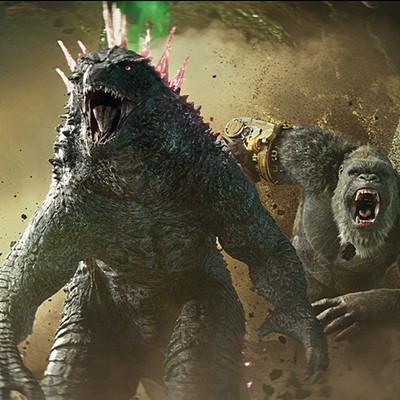It is impossible to understate the primary role water has played in shaping world history, whether it is Lewis and Clark crisscrossing the western U.S. by river, or recognizing how cities and towns have been settled by gathering around rivers, lakes and other water sources.
Perhaps the most violent expression of the centrality of water rights played out 10 years ago in Bolivia, where residents demonstrated for months after the massive engineering firm Bechtel privatized water in the mountainous and landlocked country. The army was called in to restore calm and a 17-year-old teenager was shot dead.
That battle is documented elegantly in Thirst (2004), probably one of the most telling and best documentaries about what water—and water ownership—means to this century. The subject has been dramatized in other movies—Chinatown (1974) and the animated version of that same plotline, Rango (2011), as well as the post-apoplectic Waterworld (1995)—but in Thirst, an unfortunately hard-to-find documentary, the subject matter is very real.
The film profiles hot spots for water rights—from Atlanta to Bolivia to the working class city of Stockton, Calif. It is a surprisingly captivating film and, unlike so many other documentaries about multinationals that tend to be overbearingly supercilious and contemptuous, Thirst simply lets the story tell itself. And why not? It is a compelling enough issue without dressing up the narrative in heavy-handed politics. And, more important, it is like a message in a bottle sent from the future; these three stories tell the beginning of what could be one of the major political and economic issues to shape the next century.
But, it is a red herring to say that water conservation—and, more precisely, commodification and control—is a new issue. Not only did Chinatown help launch Jack Nicholson's career as a smooth-talking roustabout, it also chronicled a decade-old Southern California corruption scandal (and marks the final film Roman Polanski directed in America before fleeing the country to avoid jail for raping a teenager, which certainly lays a certain scummy film over the already sordid story at the movie's core.)
Setting the story in the 1930s, Polanski apes the languid and cool style of that period's noir films. Nicholson's character, Jake, is a cop turned private investigator who is hired to tail a cheating husband, a weasely Water Department engineer. When the husband turns up dead, Jake pushes through a labyrinth of corrupt bureaucrats, lurid family secrets and fun-house mirrors of orange growers and greed. Rightfully, Chinatown is considered one of the period's (post-Vietnam protests, contemporary Watergate scandal) most punishing anti-authority indictments.
A similar storyline flows through Rango, a quirky and sharply written animated feature.
More spaghetti Western than noir, the film nonetheless, routinely nods to Chinatown. Even though the title character is a parched gecko, like Nicholson's character, navigates a maze of two-faced power brokers and elusive love interests as he inches towards a well-guarded secret and, again, exposes the idea that water is what makes civilization.
The film smartly casts Johnny Depp to lend his voice to the title character it is also the first film to adopt next-generation animation techniques which completely mimic each spastic and long-limb muscle twitch from Captain Jack Sparrow. The result is subtle but remarkably life-like animation pleasing both for kids and adults (although, at times, a bit more mature and naughty than, say, Shrek).
But perhaps the oddest movie to heed about a future when water is the defining element, Waterworld warned about melting polar caps a full two decades before An Inconvenient Truth mainstreamed global warming as a concern. The melted polar caps have smothered most of the globe, and set humankind on a drifting, chaotic journey for Dryland, an unimaginatively named continent. Kevin Costner plays the central character, "The Mariner," a sun-scorched and leather-clad Mad Max character who is prone to 500-meter stares, whose drifting, loner lifestyle is interrupted when he is forced into the role of knight-in-shining armor. While the film tanked at the box office, it is an oddly captivating storyline, well worth rewatching. Perhaps as a double-feature with Chasing Ice (2012), a recent extremely well-made documentary that serves as a prequel to a world, in the not-too-distant future, destroyed by melting ice caps.




















